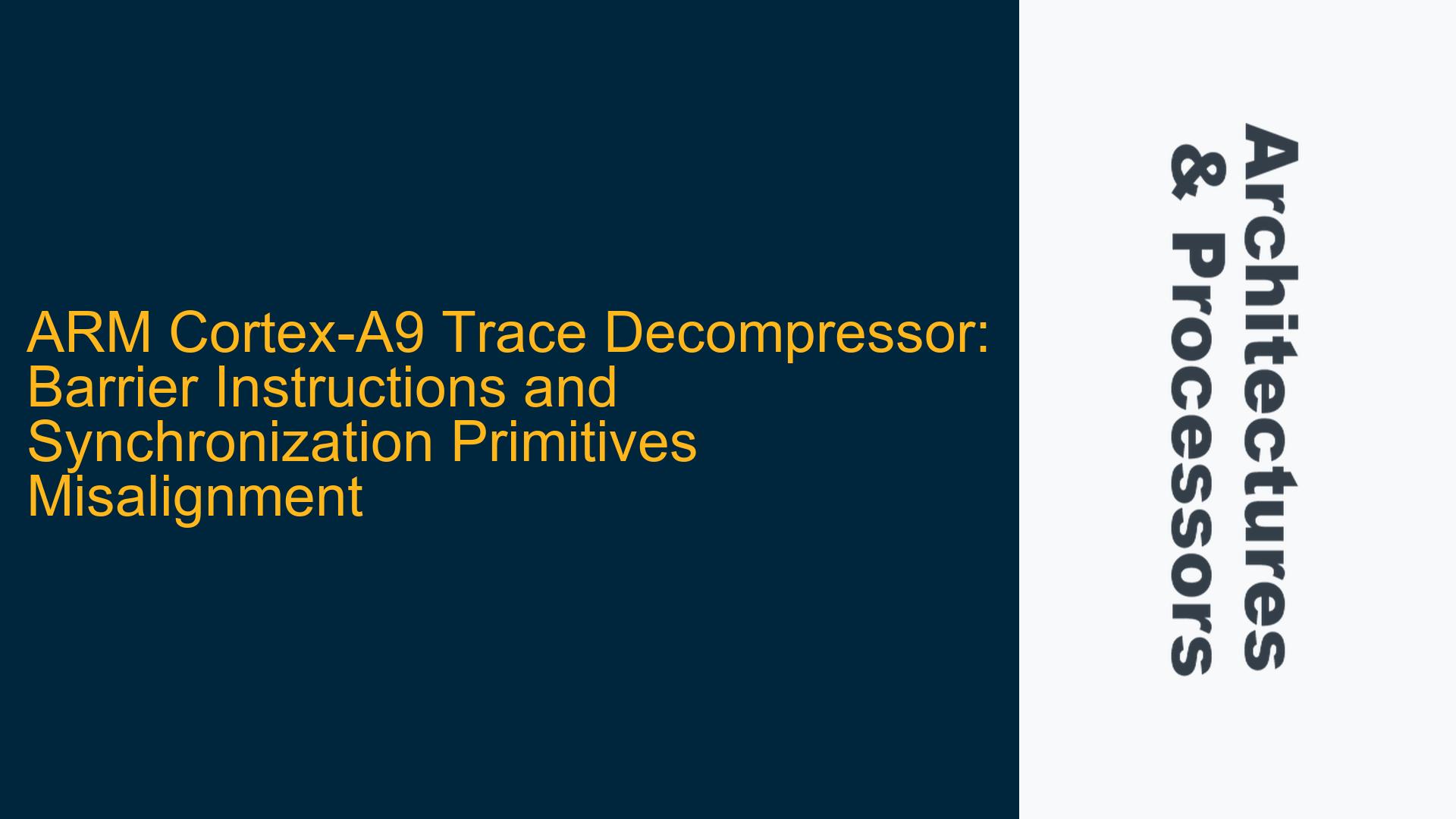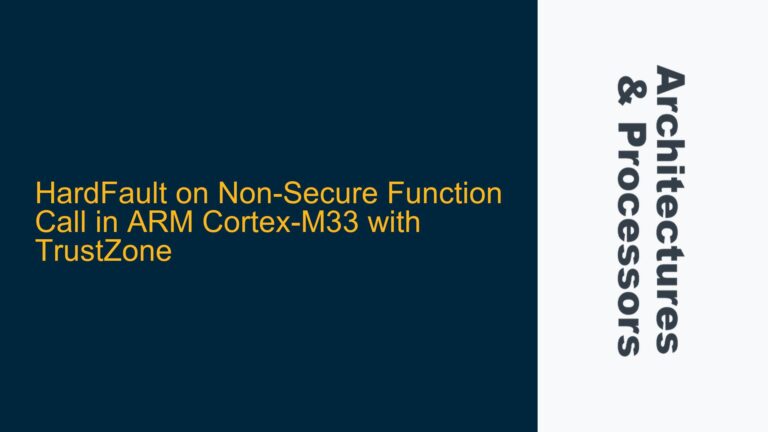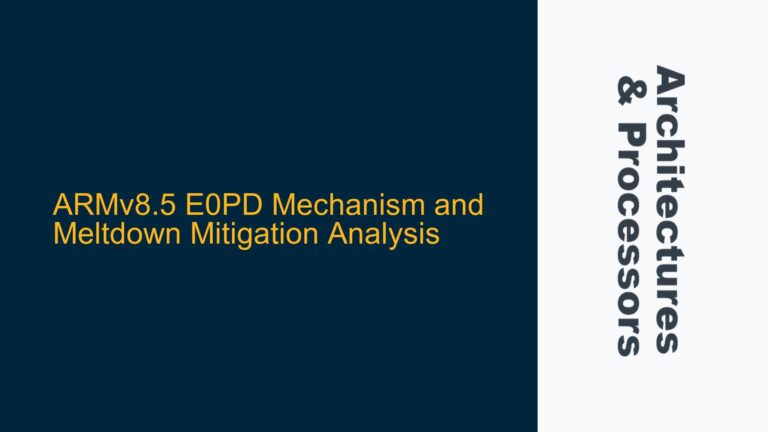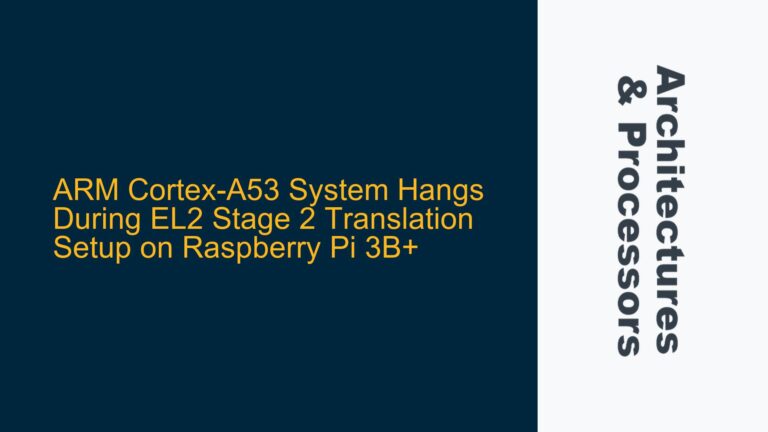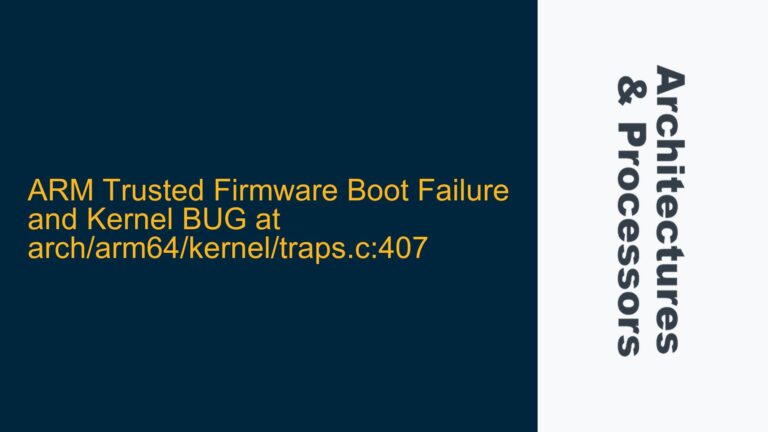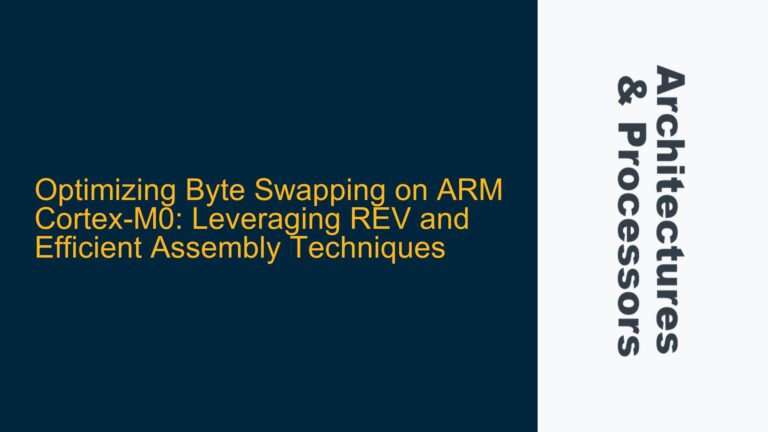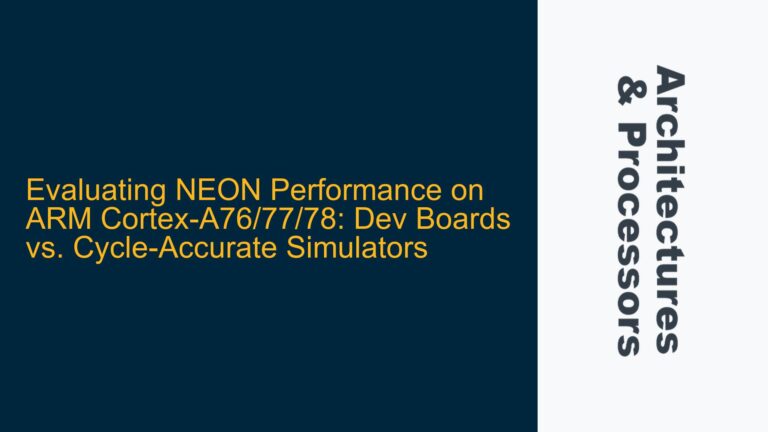ARM Cortex-A9 Trace Decompressor Misalignment with Barrier Instructions and Synchronization Primitives
When developing a trace decompressor for an ARM Cortex-A9 system, particularly on an Altera Cyclone V platform with CoreSight PFT 1.0, a critical issue arises when parsing the program image to extract waypoint information. The decompressor encounters misalignment in the decoded stream when treating barrier instructions (e.g., DMB, DSB, ISB) and synchronization primitives (e.g., LDREX, STREX) as waypoints, as suggested by ARM documentation. Specifically, the decoded stream falls out of sync at the next i-sync packet when these instructions are treated as waypoints, but remains in sync when they are treated as non-waypoint instructions. This discrepancy raises questions about the validity of the decompressed trace and the interpretation of ARM’s documentation.
The core of the issue lies in the interaction between the trace decompressor’s logic and the ARM architecture’s handling of barrier instructions and synchronization primitives. The ARM documentation suggests treating barrier instructions similarly to direct branches for waypoint identification, but empirical results indicate that this approach leads to trace misalignment. This misalignment suggests either a misunderstanding of the documentation or an edge case in the ARM Cortex-A9’s implementation that deviates from the expected behavior.
Misinterpretation of ARM Documentation and Cortex-A9-Specific Behavior
The root cause of the trace decompressor misalignment can be traced to two primary factors: misinterpretation of ARM’s documentation regarding waypoints and Cortex-A9-specific behavior in handling barrier instructions and synchronization primitives.
Misinterpretation of ARM Documentation
ARM’s documentation on waypoints suggests treating barrier instructions as direct branches for the purpose of trace decompression. This recommendation is based on the assumption that barrier instructions, like branches, introduce control flow changes that must be captured in the trace. However, this interpretation may not account for the nuanced behavior of barrier instructions in the Cortex-A9 architecture. Barrier instructions, such as DMB, DSB, and ISB, are designed to enforce memory ordering and synchronization rather than alter control flow directly. Treating them as waypoints may introduce unnecessary complexity in the decompressor’s logic, leading to trace misalignment.
Cortex-A9-Specific Behavior
The Cortex-A9 processor may handle barrier instructions and synchronization primitives differently than other ARM cores, particularly in the context of trace generation. For example, the Cortex-A9’s implementation of LDREX and STREX instructions, which are used for atomic operations, may not align with the waypoint behavior described in the documentation. This discrepancy could be due to microarchitectural optimizations or design choices specific to the Cortex-A9 that affect trace generation and decompression.
Additionally, the CoreSight PFT 1.0 trace hardware may have limitations or quirks that influence how barrier instructions and synchronization primitives are captured in the trace. These hardware-specific factors could exacerbate the misalignment issue when the decompressor treats these instructions as waypoints.
Correcting Waypoint Identification and Ensuring Trace Synchronization
To resolve the trace decompressor misalignment issue, a systematic approach is required to correct the waypoint identification logic and ensure proper synchronization with the i-sync packets. The following steps outline the troubleshooting process and potential solutions:
Step 1: Revisit ARM Documentation and Apply Relevant Footnotes
The first step is to carefully review the ARM documentation, paying close attention to footnotes and edge cases. In this context, footnote (b) in the ARM documentation may provide critical insights into the behavior of barrier instructions and synchronization primitives. Applying this footnote to the decompressor’s logic could resolve the misalignment issue by clarifying how these instructions should be treated during trace decompression.
Step 2: Modify Waypoint Identification Logic
The decompressor’s waypoint identification logic should be updated to treat barrier instructions and synchronization primitives as non-waypoint instructions. This modification aligns with the empirical observation that the decoded stream remains in sync when these instructions are not treated as waypoints. By excluding barrier instructions and synchronization primitives from waypoint identification, the decompressor can avoid introducing unnecessary control flow changes that lead to trace misalignment.
Step 3: Validate Trace Synchronization with i-Sync Packets
After modifying the waypoint identification logic, the decompressor’s output should be validated against the i-sync packets to ensure trace synchronization. This validation process involves comparing the decompressed trace addresses with the addresses specified in the i-sync packets. If the addresses match, the decompressor can be considered valid and reliable. If discrepancies persist, further investigation into the Cortex-A9’s trace generation behavior and CoreSight PFT 1.0 hardware limitations may be necessary.
Step 4: Investigate Cortex-A9-Specific Trace Behavior
To address potential Cortex-A9-specific behavior, the decompressor’s logic should be tested on other ARM cores to determine if the issue is unique to the Cortex-A9 architecture. If the issue is specific to the Cortex-A9, additional adjustments may be required to account for its microarchitectural differences. This investigation could involve analyzing the Cortex-A9’s trace generation logic and comparing it with other ARM cores to identify and address any discrepancies.
Step 5: Optimize Decompressor Performance and Reliability
Once the trace synchronization issue is resolved, the decompressor’s performance and reliability should be optimized. This optimization process includes refining the decompressor’s logic to handle edge cases, improving error detection and correction mechanisms, and ensuring compatibility with different ARM cores and trace hardware configurations. By optimizing the decompressor, developers can ensure accurate and reliable trace decompression across a wide range of ARM-based systems.
Conclusion
The misalignment issue in the ARM Cortex-A9 trace decompressor highlights the importance of carefully interpreting ARM documentation and accounting for architecture-specific behavior. By revisiting the documentation, modifying the waypoint identification logic, and validating trace synchronization, developers can resolve the issue and ensure accurate trace decompression. Additionally, investigating Cortex-A9-specific behavior and optimizing the decompressor’s performance and reliability will further enhance its effectiveness in analyzing ARM-based systems. This systematic approach not only addresses the immediate issue but also provides a framework for troubleshooting similar challenges in the future.
